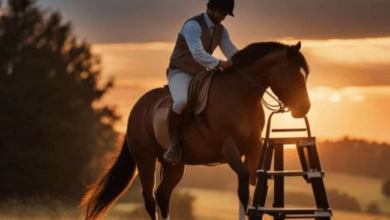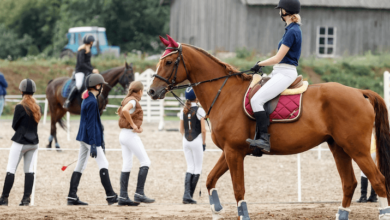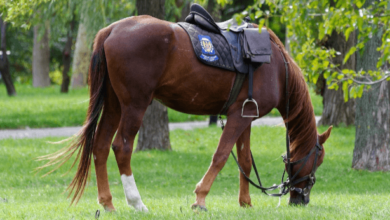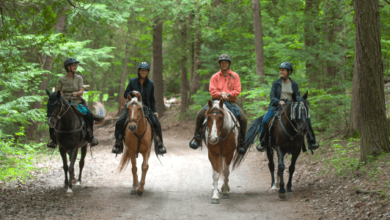How Can Riders and Horses Prepare for the Cross-Country Phase of Eventing?

Introduction
The cross-country phase of eventing is one of the most exhilarating and challenging aspects of the sport. It demands peak physical fitness, precise training, and impeccable communication between horse and rider. Preparation is key to ensuring safety and success on the course. This article delves into the multifaceted approach required for effective preparation, providing insights and strategies for both riders and horses.
Understanding the Cross-Country Phase
What is Cross-Country Eventing?
Cross-country eventing is a test of endurance, speed, and jumping ability over a varied terrain course, filled with natural and artificial obstacles. It is a part of the three-day eventing competition, which also includes dressage and show jumping.
The Importance of Preparation
Preparation for cross-country eventing is crucial due to the physical and mental demands placed on both the rider and the horse. Proper preparation can prevent injuries and enhance performance.
Fitness Training for Riders
Cardiovascular Conditioning
Cardiovascular fitness is essential for riders to maintain stamina throughout the course. Regular activities like running, cycling, and swimming can enhance cardiovascular health.
Strength Training
Strength training focuses on building core stability, which is vital for maintaining balance and control. Exercises like planks, squats, and weight lifting should be integrated into the routine.
Flexibility and Balance Exercises
Yoga and Pilates are excellent for improving flexibility and balance, which are crucial for adjusting to the horse’s movements during jumps and gallops.
Fitness Training for Horses
Building Stamina
Long, slow distance training (LSD) helps in building the horse’s cardiovascular endurance. Gradually increasing the distance and intensity prepares the horse for the sustained effort required in cross-country.
Strength and Conditioning
Hill work, interval training, and incorporating varied terrains in training sessions build muscle strength and improve the horse’s overall fitness.
Jumping Drills
Regular jumping exercises, including grids and combinations, improve the horse’s agility and confidence in handling different types of obstacles.
Diet and Nutrition
Rider Nutrition
A balanced diet rich in proteins, carbohydrates, and essential fats ensures that riders have the energy and strength needed for rigorous training and competition.
Horse Nutrition
Horses require a diet tailored to their workload. High-quality forage, grains, and supplements ensure they have the necessary energy and nutrients.
Mental Preparation
Visualization Techniques
Riders can use visualization techniques to mentally rehearse the course, which helps in building confidence and reducing anxiety.
Mindfulness and Focus
Practicing mindfulness helps riders stay calm and focused during the competition. Techniques such as meditation and breathing exercises are beneficial.
Training Strategies
Course Simulation
Simulating the cross-country course during training helps both the horse and rider become familiar with the types of obstacles they will encounter.
Progressive Training
Gradually increasing the difficulty of training sessions ensures that the horse and rider are not overwhelmed and can build confidence progressively.
Feedback and Assessment
Regular feedback from a coach or trainer helps in identifying areas for improvement and tracking progress.
Essential Equipment
Safety Gear for Riders
Helmets, body protectors, and appropriate footwear are essential for rider safety during training and competition.
Tack and Equipment for Horses
Properly fitting saddles, bridles, and protective boots for horses are crucial to ensure comfort and prevent injuries.
Common Challenges and Solutions
Dealing with Nervousness
Both horses and riders can experience nervousness. Techniques like deep breathing and maintaining a calm environment can help alleviate stress.
Improving Communication
Clear and consistent communication between rider and horse is key. Using aids effectively and building a strong partnership through regular training is essential.
Veterinary Care and Check-ups
Regular Health Checks
Regular veterinary check-ups ensure that the horse is in optimal health and can help in identifying and addressing any issues early.
Injury Prevention and Management
Understanding common injuries in eventing and taking preventive measures, such as proper warm-ups and cool-downs, can minimize the risk of injury.
FAQs
How can riders improve their cardiovascular fitness for cross-country eventing? Riders can improve their cardiovascular fitness through activities like running, cycling, and swimming, which help build stamina and endurance.
What are some effective strength training exercises for riders? Effective strength training exercises for riders include planks, squats, lunges, and weight lifting, which build core stability and overall strength.
How should horses be conditioned for cross-country eventing? Horses should be conditioned through long, slow distance training to build stamina, interval training for strength, and regular jumping exercises to improve agility and confidence.
What type of diet is best for horses preparing for cross-country eventing? A diet rich in high-quality forage, grains, and supplements tailored to the horse’s workload ensures they have the necessary energy and nutrients for training and competition.
How can riders mentally prepare for the cross-country phase? Riders can use visualization techniques, mindfulness practices, and mental rehearsal to build confidence, reduce anxiety, and stay focused during the competition.
What safety gear is essential for cross-country eventing? Essential safety gear for riders includes helmets, body protectors, and appropriate footwear. For horses, properly fitting saddles, bridles, and protective boots are crucial.
Conclusion
Preparation for the cross-country phase of eventing is a comprehensive process that involves physical fitness, mental readiness, proper nutrition, and the right equipment. By focusing on these areas, both riders and horses can perform at their best, ensuring safety and success on the course. The journey of preparation not only enhances performance but also strengthens the bond between horse and rider, making the experience truly rewarding.



